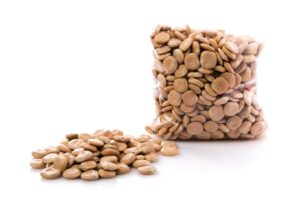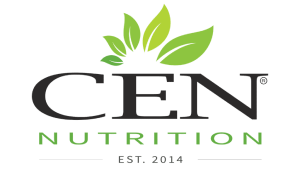
Lupin hulls are particularly high in digestible fibre and are therefore an excellent addition to horse rations as a source of highly nutritious slow-release sustained energy.
In This Article:
Why LUPINS are a Super Fibre
Types of LUPINS
The ENERGY from LUPINS
Why LUPINS are HEALTHY for horses
Consider OATS with LUPINS for horses in Heavy Work
WHY LUPINS ARE A SUPER FIBRE
Lupin hulls are particularly high in digestible fibre and are therefore an excellent addition to horse rations as a source of highly nutritious slow-release sustained energy. They are referred to as a ‘Super Fibre’ by many horse nutritionists, along with beet pulp and other types of legume hulls (eg soy hulls). The billions upon billions of beneficial gut microflora that colonise horses’ hindgut (large intestines) ferment the digestible fibre in lupins and lupin hulls (and other high fibre feeds) and break it down into volatile fatty acids. These VFAs are then converted inside horses’ bodies to glucose (the form of energy all living cells require), glycogen (which is glucose stored in the muscles for use when required) and fat.

Lupins are 90% digestible as they are low in the indigestible fibre lignin, but are high in digestible (fermentable) fibre which acts as a prebiotic (food) for beneficial fibre-digesting hindgut microflora, which are very important for healthy digestive function, the immune system and for general health and optimal performance. Lupins, unlike some other types of legumes fed to horses (eg soybeans) are very low in anti-nutrients like protease inhibitors and goitrogens and are also very low in phytoestrogens which can cause hormonal issues in some horses, especially mares.
Digestible fibre is considered by horse nutritionists to be the optimal primary energy source for horses, and has been since horses first began to evolve millions of years ago on pasture and other available plants. Horses are trickle feeders and hindgut fermenters, and their digestive systems are designed to digest and absorb fibrous plant material almost constantly for fuel, and digestible fibre (rather than fat and starch from grains in many pre-mixed horse feeds) is the healthiest form of DE (digestible energy) for all horses, including performance horses, broodmares and growing youngsters, as well as pleasure horses.
TYPES OF LUPINS
There are two main varieties of lupins, bitter lupins and sweet lupins. Only sweet lupins are fed to horses and other animals because they are very low in alkaloids (around 0.05%), while bitter lupins are around 2% alkaloids, an amount which is toxic for horses (and other animals). The high level of alkaloids in bitter lupins also make them unpalatable, while sweet lupins are highly palatable for horses.
Lupins have been cultivated for thousands of years as a nutritious high protein food for humans and more recently they have gained popularity as a feed for animals in agricultural production and for horses. They are a local crop, grown here in Australia, predominantly in Western Australia, and are also grown in many other countries. Lupins have a hard seed coat which makes them very difficult for horses to chew so they need to be processed in some way, e.g. soaked, cooked, steamed, crushed, extruded and pelleted or micronized for consumption by horses.
Lupins For Horses - Energy Benefits
Lupins are an excellent source of energy, particularly for growing, breeding and horses in heavy work. When processed, (soaked, cooked, steamed, crushed, extruded and pelleted or micronized), Sweet lupins are very palatable for horses and are considered a healthy addition to a balanced diet containing fats, carbohydrates, protein, vitamins and minerals.
They are an energy-dense feed that is low in sugar and starch (less than 10% combined sugar and starch), around 28-34% protein (one kilogram of lupins provides 14 grams of the essential amino acid lysine and 2 grams of methionine), around 11-15% fibre, and around 5% fat (of which 35% is mono-unsaturated, 45% polyunsaturated and 2% sterols).
Lupins provide around 13Mj/kg of digestible energy (around the same as oats) and are also a good source of the digestible form of fibre, a slow-release source of sustained energy, and are low in indigestible fibre.
Due to the low sugar and starch levels of lupins, they are ideal for inclusion in diets of horses and ponies with EMS (equine metabolic syndrome), insulin resistance, PSSM and Cushings disease or who have or are prone to ulcers, tying up or laminitis.
WHY LUPINS ARE HEALTHY FOR HORSES
Lupins are a legume, from the same family as lucerne, clover, vetch, lentils, chick peas, beans, peas etc and as such are very nutritious and healthy for horses. Cereal grains (oats, barley, wheat, corn, rice etc) can cause insulin spikes, blood sugar level fluctuations and hindgut issues due to the high levels of sugar and starch, which encourages the overgrowth of pathogenic (disease-causing) gut microflora and associated lowering of hindgut pH which can lead to hindgut acidosis, colic, behaviour issues, inflammation and laminitis. In contrast, the low sugar and starch levels of lupins encourage beneficial gut microflora to proliferate and do not cause insulin spikes or blood sugar level fluctuations that can lead to reduced performance and health issues.
CONSIDER OATS WITH LUPINS FOR HORSES IN HEAVY WORK
The addition of Oats with Lupins is a great safe energy source for horses in heavy work. If a horse is in hard or fast work then grains like oats may be added to the diet to provide quick-release energy from sugar and starch, but fibrous feeds should always form the basis and bulk of all horses’ diets. Most horses don’t require grain in the diet though because their requirements for digestible energy are usually met (and often even exceeded) by providing fibre-rich feeds like grass hay, lucerne hay, lupin hulls or beet pulp and lupins. Horses require between 1.5 and 2% of their own body weight in forage per day, which is 7.5 – 10kgs of roughage/day for a 500kg horse (from sources such as pasture, hay, lupins, beet pulp, lupin hulls etc).
Written by Elizabeth Funnell
Equine Nutrition Educator
Sub-editor Bryan Meggitt (BMedSc. PGCrtMedSc.)
Senior Scientist and Co-founder of CEN Horse Nutrition


